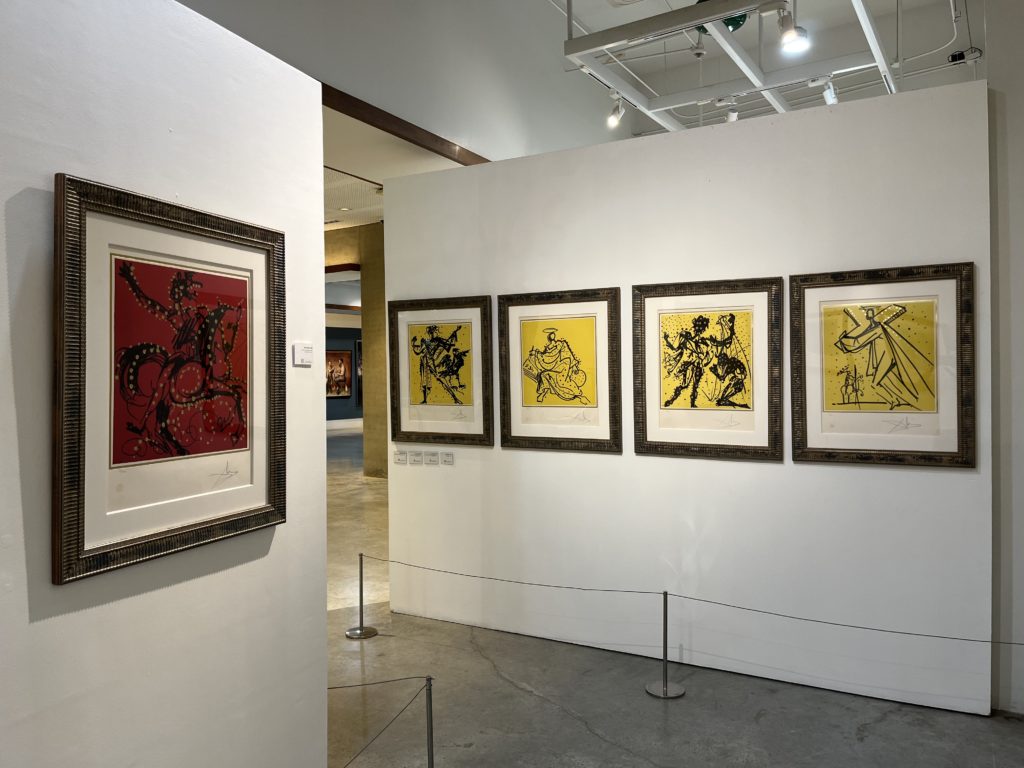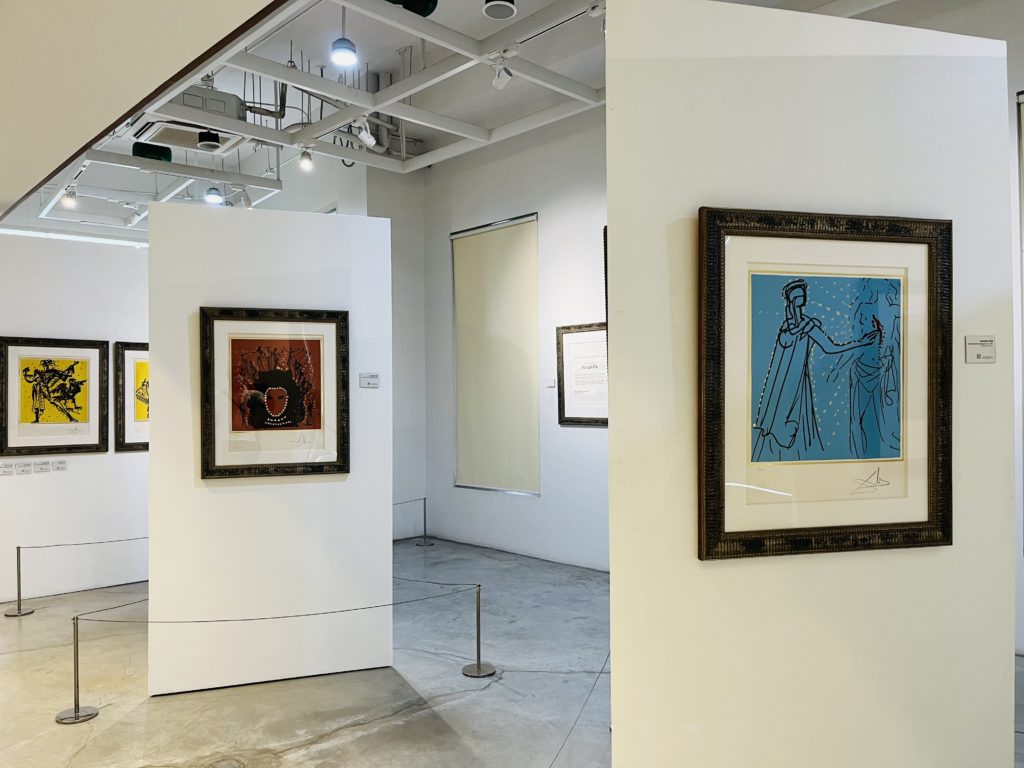The Iloilo Museum of Contemporary Art (ILOMOCA) has on display one of the rarest collection that you’ll ever encounter in the Philippine art gallery – the portfolio of 12 original lithographs on Arches paper by Salvador Dali known as the Knights of the Round Table.

Released in 1978, the collection is part of the 350 Portfolios with each containing the 12 original lithographs on Arches paper, each hand signed by the artist, and with an assigned number.
The Portfolio of lithographs by Salvador Dali has a specific marking like E.A. which is épreuve d’artiste or artist’s proof and also HC which means Hors Commerce or not for sale or before the trade – codes or language of authenticity understood by guardians of genuine art.
The collection is worth viewing to learn about lithography, the creativity of the artist, and to know Salvador Dali.
‘I myself am Surrealism’
The name Salvador Dali needs no long introduction. There is a wealth of articles about him, his life and art online with testimonies from friends, foes, and the artist himself.
Art aficionados and critiques around the world somehow agree that he is eccentric, bizarre, or mad; flamboyant and stylish; yet they likewise recognize that Salvador Dali is versatile, prolific, and a genius.
Growing up from the small town of Figueres outside Barcelona, Spain, his artistic skills was cultivated as early as age 10 where he acquired drawing lessons and proceeded to study art at the Madrid School of Fine Arts where he experimented with various styles popular at that period.
READ: ILOMOCA: Connecting Ilonggos to the world of Contemporary Art
But Salvador Dali would become the 20th century most famous surrealist artist, and, he did not only paint, but he dipped his hands in fashion, advertising, writing, film, sculpture, and printmaking. While his surrealist style subscribed to automatism, the Freudian imagery and symbols that characterized his work is said to be a self-created system identified as “paranoiac critical” and which brought him face-to-face with Sigmund Freud in 1938, sketching the famous psychoanalyst at 82 years old.[1]
No less than Salvador Dali declared that “I myself am Surrealism.” However, members of the Surrealists would have a tumultuous relationship with him, sometimes honoring the artist, and other times disassociating themselves from him.[2]
In 1965 he began selling signed sheets of otherwise blank lithograph paper for $10 a sheet, writes Stanley Meisler, adding that he (Dali) may have signed well over 50,000 in the remaining quarter century of his life, an action that resulted in a flood of Dalí lithograph forgeries.
Understanding Lithography[3]
Lithography was invented in 1878 in Germany. The processed is based on the principle that water and grease do not mix. On a suitable flat printing surface marks are made in a greasy medium. The surface is dampened with water, which settles only on the unmarked areas as it is repelled by the greasy drawing medium.
Next, a roller covered with greasy printing ink is rolled over the surface. The ink now adheres only to the drawn marks, the water repelling it from the rest of the surface. Finally, the ink is transferred to a sheet of paper by running paper and the printing surface together through a special press.
From the beginning European artists were intrigued with lithography, as they could draw and paint directly on the printing plate. In the early 19th century lithography was usually monotone and not favored for commercial purposes.
ALSO READ: ILOMOCA hangs an all-female art at AV Gallery
Stones were used as the printing surface, which was a cumbersome and expensive method. By the 1850’s stones were replaced with metal plates–first zinc, then copper in the 1890s. After the American Civil War mass production was possible, but it wasn’t until after the 1876 Centennial Exposition in Philadelphia, where it received much exposure that lithography flourished.

Brilliantly colored lithography, nicknamed chromolithography, was popular with artists and the public. With color lithography, each color is made on a different plate, then each plate is pressed successively against the printing surface. If the plates are not lined up perfectly, the registration will be off, meaning that the different colors will not be lined up on the print.
Manual lithography is a versatile process and has come in a wide variety of styles. The following lists some of the significant styles. Often many of the styles were used together.
- Pen and ink: These resemble pen and ink drawings
- Chalk style or crayon style: This type of lithography resembles a chalk or crayon drawing.
- Mezzotint style: This creates a similar style to mezzotint, a form of intaglio.
- Spatter: The artist could splatter ink on the lithographic plate. This gave a tonal effect of a series of randomly sized dots.
- Stipple: Before the half-tone processes stipple dots were used to create tone. These could be made by hand or with a special roller. Stipple was commonly used on trading cards and other commercial prints of the late 19th century.
In the case of the Salvador Dali Portfolio of lithographs, all plates and stones used were destroyed.
References:
[1] The Surreal World of Salvador Dalí, Stanley Meisler, April 2005; https://www.smithsonianmag.com/arts-culture/the-surreal-world-of-salvador-dali-78993324/
[2] https://www.theartstory.org/artist/dali-salvador/
[3] The entire section was lifted from the Dictionary of Prints and Printing, http://www.cycleback.com/printguide.htm